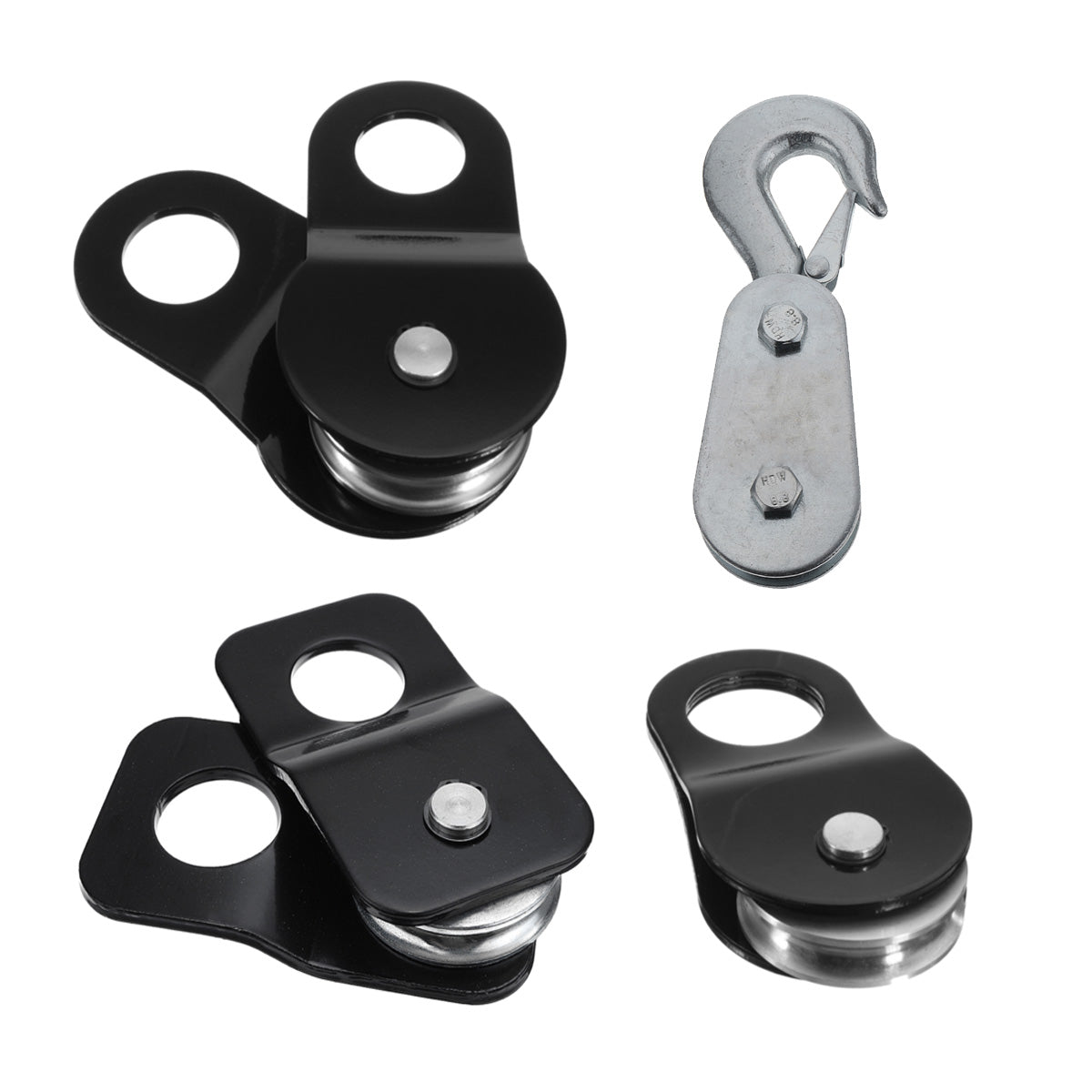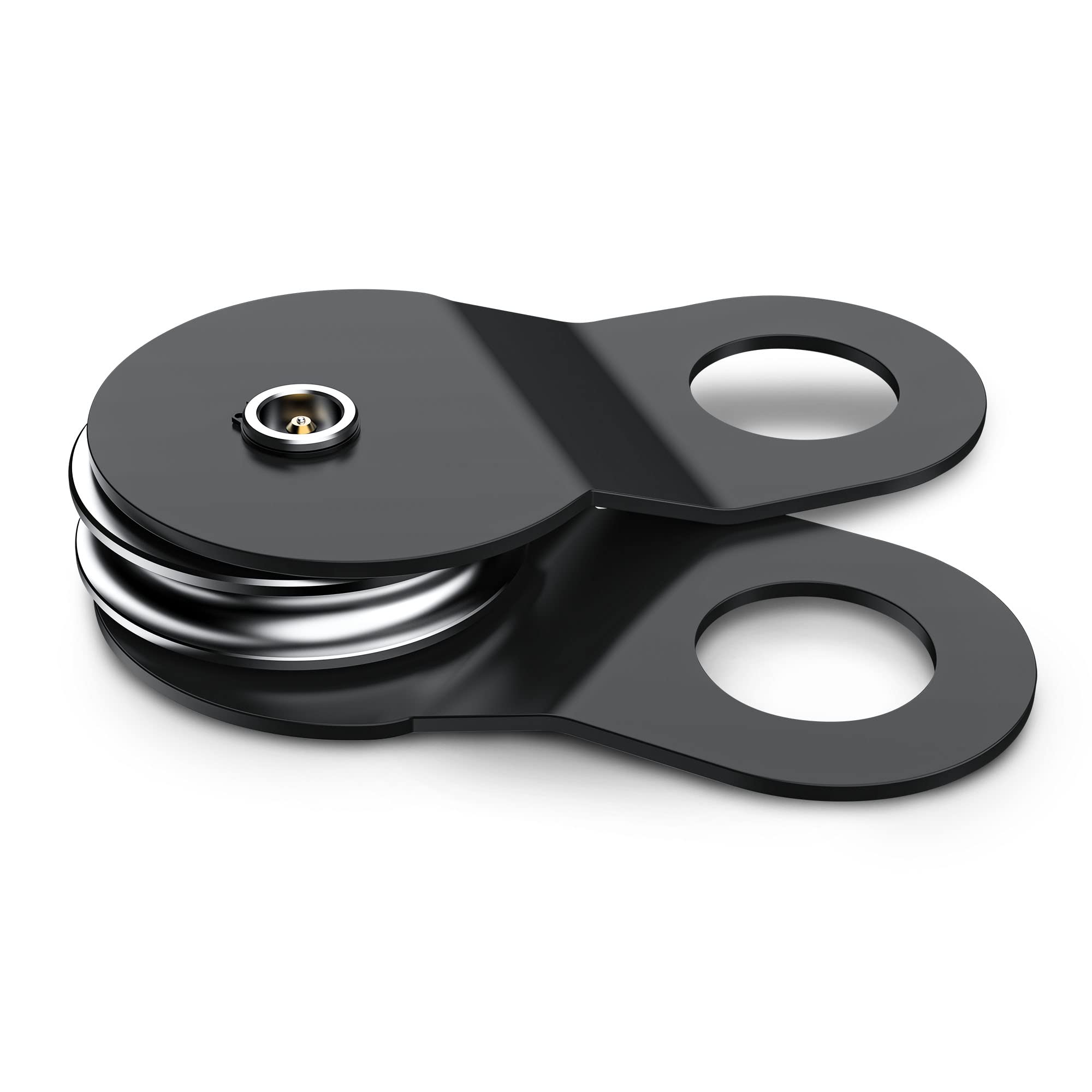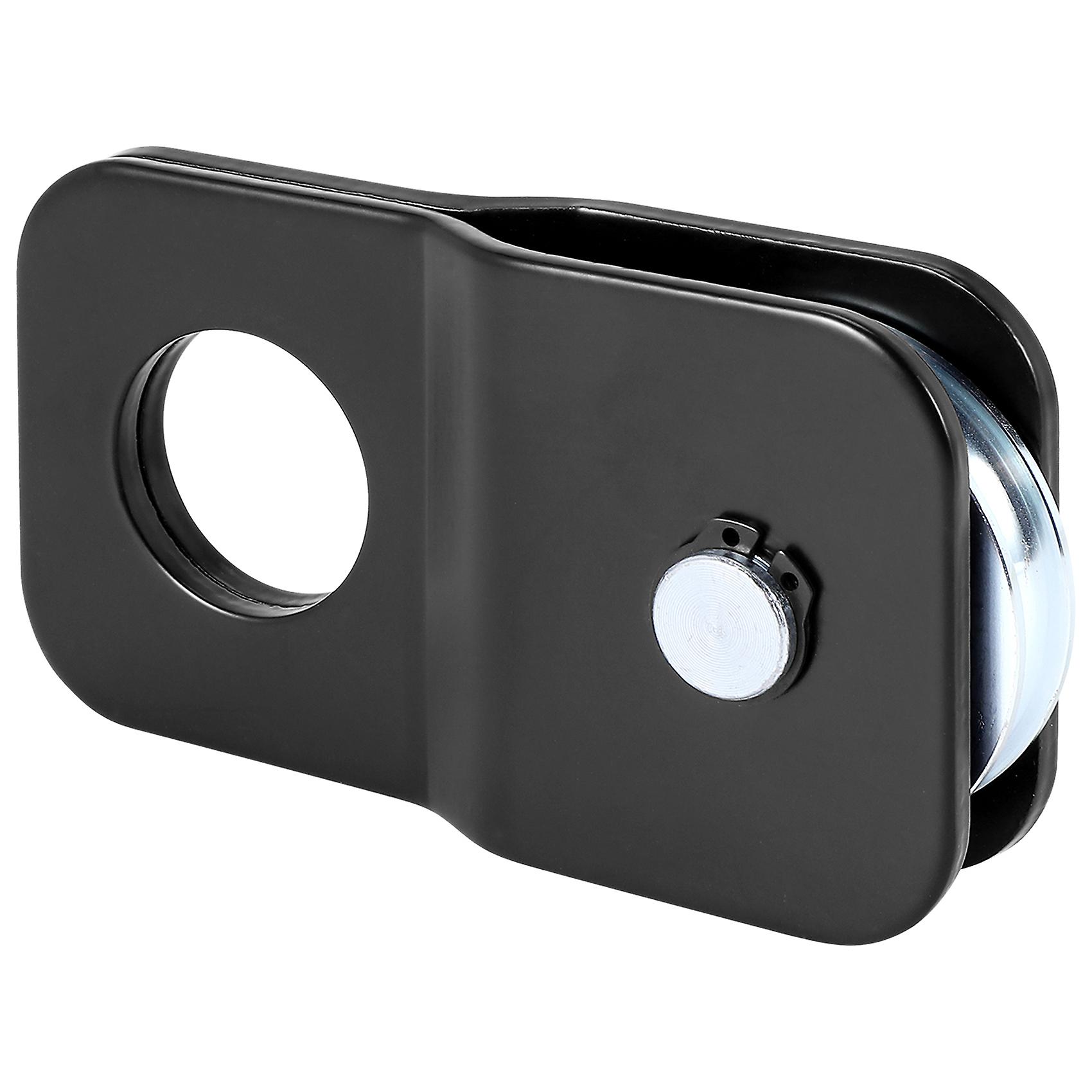Product Description
Heavy duty 0.25 ton-20ton Chain block & lever hoist
1.Capacity:0.25t-20t
2.Standard height:1-3m
3.Have certificate of CE
4. One year gurantee.
HSZ-A(B)& HS & HSH-VT Type chain block& Lever block:
*Capacity from 0.25T to 20T.
*Bearings inside load chain sprocket increase mechanical efficiency
*Chain guides provide smooth chain operation.
*lightweight steel construction with durable powder coat finish.
*Drop forged hooks and hook holders, heat treated to ensure the safety and durability.
*Gear assembly provide smooth operation by little hand efforts.
*T80 grade high tensile lifting chain make more effective.
Chain Block & Lever Block technical parameter:
| Model | HSZ-0.5 | HSZ-1.0 | HSZ-1.5 | HSZ-2.0 | HSZ -3.0 | HSZ-5.0 | HSZ-10.0 | HSZ-20.0 | |
| Capacity (TON) | 0.5T | 1T | 1.5T | 2T | 3T | 5T | 3T | 3T | |
| Standard Lifting Height(M) | 3 | 3 | 2.5 | 3 | 3 | 3 | 3 | 3 | |
| Running test load (KN) | 6.3 | 12.5 | 18.8 | 25 | 37.5 | 62.5 | 125 | 250 | |
| Effort required to lift max. load (N) | 231 | 309 | 320 | 360 | 340 | 414 | 414 | 828 | |
| No. of chain strand | 1 | 1 | 1 | 1 | 2 | 2 | 4 | 8 | |
| Load Chain Dia.(MM) | 6 | 6 | 8 | 8 | 8 | 10 | 10 | 10 | |
| Net.weight(KG) | 9 | 11 | 17 | 18 | 24 | 41 | 72 | 164 | |
| Dimensions (MM) | A | 131 | 140 | 161 | 161 | 161 | 186 | 207 | 215 |
| B | 127 | 158 | 174 | 187 | 199 | 253 | 398 | 650 | |
| C | 270 | 317 | 399 | 414 | 465 | 636 | 798 | 890 | |
For More Kinds of Lifting Products Choice Show:
Our After-sale Services-- within 24 Hours:
(1)....Before--Sale Service :
01..Quality Control: Strictly Production Request base on signed contract ;
02..Delivery Time: Guarantee within contracted delivery time ;
03..Photos: Send photos to our customer after finish production and packing ;
04..Packing Details:Give complete packing size table to our customer;
05..Brand: Respect our customers' advice to use our customers' own brand & logo ;
06..Documents:Provide high efficiency service to post you all required customs clearance documents by DHL or TNT .
(2)....After--Sale Service :
01..Reply : Fast reply all your questions on line or by email or by telephone ;
02..Quality Problems:Our factory is responsible for any problems if it is resulted by our reasons (Such as give you free new parts to repair it or give enough some compensation cost to you) ;
03..Safe Operating: Pls remind your customers to respect our Operating Manual to operate our machine rightly, to guarantee Safe when operate our machine.
|
Shipping Cost:
Estimated freight per unit. |
To be negotiated |
|---|
| Application: | Double Beam Crane, Gantry Crane, Bridge Crane, Tower Crane, Single Grinder Crane, Lifting Platform, Small Crane |
|---|---|
| Type: | Chain Hoist |
| Sling Type: | Chain |
| Samples: |
US$ 1/Piece
1 Piece(Min.Order) | Order Sample |
|---|
| Customization: |
Available
| Customized Request |
|---|

What maintenance procedures are required to keep winch pulleys in good condition?
To keep winch pulleys in good condition and ensure their optimal performance, several maintenance procedures should be followed. Here is a detailed explanation:
Regular maintenance is essential for the longevity, reliability, and safe operation of winch pulleys. By performing the following maintenance procedures, you can keep winch pulleys in good condition:
- Cleaning: Regularly clean the winch pulleys to remove dirt, debris, and other contaminants that can accumulate over time. Use a soft brush or cloth to gently scrub the pulleys and remove any buildup. Pay special attention to the grooves, sheaves, and bearing areas. Avoid using harsh chemicals that can damage the pulleys or compromise their integrity.
- Inspection: Conduct thorough inspections of the winch pulleys to identify any signs of wear, damage, or defects. Look for cracks, corrosion, bent or broken parts, or excessive wear on the sheaves or bearings. Check the cables, ropes, or straps for fraying, kinks, or signs of weakening. If any issues are detected, repair or replace the affected components promptly.
- Lubrication: Apply appropriate lubrication to the winch pulleys to ensure smooth and efficient operation. Use lubricants recommended by the manufacturer, such as silicone-based or synthetic lubricants. Apply the lubricant to the bearing surfaces, sheaves, and other moving parts as per the manufacturer's guidelines. Avoid over-lubrication, as it can attract dirt and debris.
- Bearing Maintenance: Winch pulleys often have bearings that require maintenance. Check the manufacturer's recommendations for bearing maintenance intervals and procedures. Clean and inspect the bearings regularly, and replace them if signs of wear or damage are present. Ensure that the bearings are properly lubricated to reduce friction and maintain their performance.
- Alignment: Check the alignment of the winch pulleys to ensure they are properly aligned with the cables, ropes, or straps. Misalignment can cause premature wear, increased friction, and reduced efficiency. Adjust the pulleys as necessary to ensure proper alignment and smooth operation.
- Load Testing: Periodically perform load testing to verify the load capacity and performance of the winch pulleys. Follow the manufacturer's guidelines for load testing procedures and use appropriate equipment to apply controlled loads. Load testing helps identify any potential issues with the pulleys and ensures they can safely handle the intended loads.
- Storage: If winch pulleys are not in use for an extended period, store them in a clean and dry environment. Protect them from moisture, extreme temperatures, and corrosive substances. Consider using protective covers or storage containers to prevent dust accumulation and potential damage during storage.
- Manufacturer's Recommendations: Always refer to the manufacturer's recommendations and guidelines for specific maintenance procedures and intervals. Different winch pulleys may have unique maintenance requirements or specific considerations. Adhering to the manufacturer's instructions ensures that the maintenance procedures are appropriate for the particular winch pulleys being used.
By following these maintenance procedures, you can keep winch pulleys in optimal condition, prolong their lifespan, and ensure safe and reliable operation. Regular maintenance not only enhances the performance of winch pulleys but also helps prevent potential failures or accidents during lifting and pulling operations.

How do winch pulleys contribute to marine and boating equipment?
Winch pulleys play a significant role in marine and boating equipment. Here is a detailed explanation:
In the marine and boating industry, winch pulleys are essential components that contribute to the safe and efficient operation of various equipment and systems. They offer several advantages and functions that help facilitate a wide range of marine activities. Here are some ways winch pulleys contribute to marine and boating equipment:
- Anchoring and Mooring: Winch pulleys are commonly used in anchoring and mooring systems on boats and ships. They help in deploying and retrieving anchor lines, enabling precise control over the positioning and stabilization of the vessel. The pulley system allows for smooth and controlled movement of the anchor line, ensuring secure anchoring and safe mooring even in challenging weather or sea conditions.
- Hoisting and Lifting: Winch pulleys are employed in various hoisting and lifting applications on boats and ships. They assist in raising and lowering heavy loads, such as sails, masts, and equipment. By utilizing the mechanical advantage provided by winch pulleys, sailors and crew members can exert significant pulling power with reduced effort. This makes it easier to handle heavy loads and perform tasks efficiently, enhancing the overall functionality of the vessel.
- Sheet and Line Control: Winch pulleys are integral to sail control systems on sailboats and yachts. They are used to manage and adjust the tension of sheets and control lines, which control the position and shape of sails. Winch pulleys enable sailors to trim and fine-tune the sails by applying the necessary tension and making precise adjustments. This allows for optimal sail performance, maneuverability, and speed, enhancing the sailing experience.
- Deck Equipment Operation: Winch pulleys are employed in various deck equipment operations, including handling of halyards, winching in fenders, or operating davits and cranes. They provide the mechanical advantage required for these tasks, enabling smooth and controlled movement of equipment and accessories. Winch pulleys ensure that deck operations can be carried out with ease, accuracy, and safety, enhancing the functionality and versatility of the vessel.
- Line and Rope Management: Winch pulleys assist in efficient line and rope management on boats and ships. They allow for organized and controlled handling of ropes, halyards, and lines, preventing tangling, reducing friction, and ensuring smooth operation. Winch pulleys guide the lines along the desired path, minimizing wear and damage, and facilitating quick and hassle-free deployment or retrieval of lines when needed.
- Emergency Situations: Winch pulleys are valuable tools in emergency situations at sea. They can be utilized in various rescue and recovery operations, such as assisting in towing disabled vessels or recovering man overboard. Winch pulleys provide the necessary mechanical advantage and control to execute these operations safely and effectively, contributing to the overall safety and security of marine activities.
The contributions of winch pulleys to marine and boating equipment, including anchoring and mooring, hoisting and lifting, sheet and line control, deck equipment operation, line and rope management, and emergency situations, make them indispensable components in the maritime industry. Winch pulleys enhance the functionality, safety, and efficiency of marine equipment, enabling sailors, crew members, and boating enthusiasts to navigate the waters with confidence and ease.

Can you explain the components and design features of a winch pulley?
A winch pulley consists of several components and incorporates specific design features to ensure its functionality and durability. Here is a detailed explanation of the components and design features of a winch pulley:
- Sheave: The sheave, also known as the wheel or pulley wheel, is a central component of the winch pulley. It is a grooved wheel that guides the winch cable or rope. The sheave typically has a V-shaped groove or multiple grooves to ensure proper alignment and secure grip on the cable or rope. The size and design of the sheave may vary depending on the intended application and load capacity of the winch pulley.
- Frame or Housing: The sheave is mounted on a frame or housing, which provides support and stability for the winch pulley. The frame is designed to hold the sheave securely in place and withstand the forces and loads encountered during winching operations. It may have a compact and lightweight design for portable winches or a more robust and heavy-duty construction for industrial or off-road applications.
- Attachment Point: The frame of the winch pulley typically includes an attachment point, such as a hook or a shackle, for connecting the pulley to an anchor or a load. This attachment point allows for secure and reliable connection, ensuring that the pulley can effectively transmit the pulling force between the winch and the load.
- Materials: Winch pulleys are commonly made from durable and high-strength materials to withstand the demanding conditions of winching operations. Steel is a commonly used material for winch pulleys due to its strength and resistance to wear and deformation. Some winch pulleys may also incorporate high-strength alloys or other specialized materials to enhance performance and longevity.
- Bearings: Bearings are critical components of winch pulleys as they enable smooth rotation of the sheave. High-quality bearings are used to minimize friction and ensure efficient operation. The bearings may be sealed or shielded to protect against contaminants and maintain proper lubrication, enhancing the overall durability and performance of the winch pulley.
- Load Rating: Winch pulleys have specific load ratings that indicate their maximum capacity to handle loads. The load rating is determined based on factors such as the strength of the materials used, the design of the sheave, and the overall construction of the winch pulley. It is important to select a winch pulley with a load rating suitable for the intended application to ensure safe and efficient operation.
- Finish and Coating: Some winch pulleys may incorporate finishes or coatings to enhance their performance and durability. For example, a corrosion-resistant coating or plating can be applied to protect the winch pulley from rust and corrosion, particularly in outdoor or marine environments. Surface treatments may also be used to reduce friction, improve wear resistance, or enhance the pulley's overall performance.
In summary, a winch pulley consists of components such as the sheave, frame or housing, attachment point, bearings, and may incorporate materials, load ratings, and finishes or coatings. The sheave guides the winch cable or rope, while the frame provides support and stability. The attachment point allows for secure connection, and high-quality bearings ensure smooth rotation. The materials used are durable and high-strength, and the load rating indicates the maximum capacity of the winch pulley. Finishes and coatings can be applied for protection and improved performance. These components and design features collectively contribute to the functionality, durability, and reliability of winch pulleys in various winching applications.


editor by CX